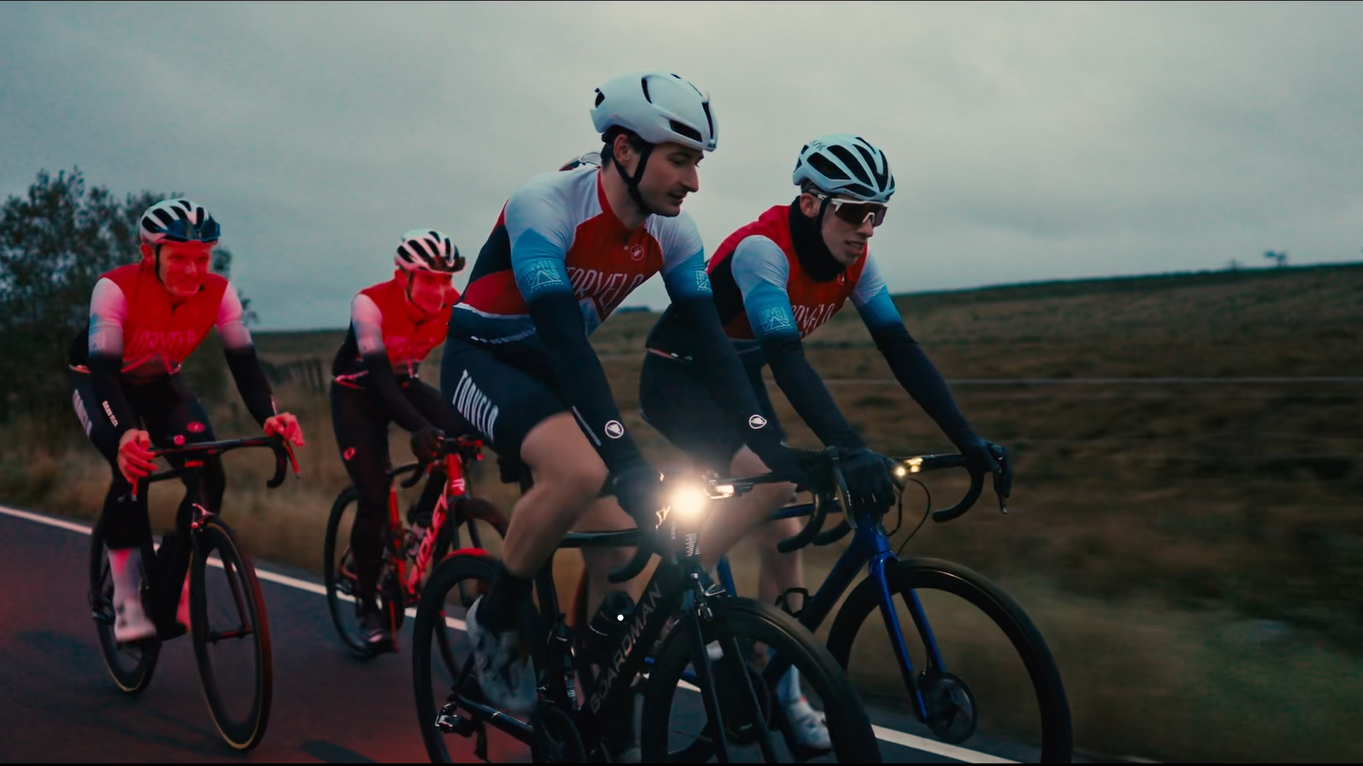“I didn’t see that rider until the last second.”
The weather, the low sun, the wet roads – they all conspire to make life on two wheels that bit trickier. But with the right kit and a few smart precautions, winter cycling can still be enjoyable – and perhaps most importantly, safe.
As well versed riders, you’re all aware of the basics – but I’d be remiss not to start there because they really do matter.
Prepare for the weather
Your winter bike will likely have been in storage for a good number of months – quite possibly not looked at since the “good” bike came out in spring – so there are some key checks to perform before you head out.
It goes without saying that the bike should be mechanically sound – the chain should be lubricated and possibly replaced, and your gears should engage smoothly.
Headsets and bottom brackets take a battering on Scottish winter roads, and bearings may dry or require replacement, so have your local bike shop or trusted mechanic check them out.
In addition, check your brake pads often – grit and water wear them down faster – and consider fitting mud guards. Your clothes (and riding buddies) will thank you.
For comfort, you should dress in layers with a waterproof outer shell and breathable base layers to regulate temperature.
After your ride I know all too well that nothing sounds better than warming up as soon as you can with a hot bath and coffee, but do try to clean your bike after each winter ride. At a minimum rinse/clean the drive train and dry it thoroughly to prevent rust build up. Remember only oil your chain after it has completely dried.
Be seen, not sorry
The Highway Code says your bike must be equipped with white front and red rear lights, a red rear reflector, and – if your bike was made after 1985 – amber pedal reflectors.
But if you want to stay truly visible, you’ll want to go further. Here’s what I recommend to every cyclist who rides through winter:
· Use front and rear lights on both steady and flashing modes
· Add reflective details to moving parts – ankles, pedals, spokes
· Don’t fade into the background – layer up with a bright or reflective gilet or jacket
· Consider daytime running lights, especially in misty or low-sun conditions
· Consider winter/gravel tyres or lowering your tyre pressure slightly for more grip
Helmets – to wear or not to wear?
Every day we see the positive outcomes that result from a rider wearing their helmet. We also sadly see the life-changing and tragic outcomes that come from a rider failing to wear one.
A road traffic accident is never going to be caused because someone did not wear a helmet and there is no law in the UK mandating the compulsory wearing of a cycle helmet.
However, rule 59 of the Highway Code (2024) recommends that a cyclist: “should wear a cycle helmet that conforms to current regulations, is the correct size and securely fastened. Evidence suggests that a correctly fitted helmet will reduce your risk of sustaining a head injury in certain circumstances.”
Legally speaking there’s also a small chance that if you’re injured in a collision and weren’t wearing a helmet, an insurer might argue ‘contributory negligence’ meaning the injured party must accept a percentage of responsibility for causing the accident which is then deducted from your overall settlement.
In our eyes, it cannot be denied – wearing a helmet improves your protection against sustaining a brain injury. This is why Digby Brown encourages helmet use.
Ride assertively
Winter roads can make even the most confident riders cautious – but staying safe doesn’t mean shrinking into the gutter.
If you ride too close to the kerb you’ll often encounter drains, potholes and puddles that can throw your balance. Instead, hold your position where you can be seen and where drivers have to slow down and think before passing.
Cycle lanes are great when available, but they’re not compulsory. The key is to ride predictably and stay visible.
Take extra care on the inside of heavy goods vehicles or buses. Their size and blind spots can easily hide a rider from view even in the best conditions.
If an accident happens
Even the most careful cyclist can end up in an accident caused by someone else’s negligence. I’ve seen it too often – a driver not checking mirrors, a pothole left unrepaired, a door suddenly opened into your path.
If the worst should happen:
· Report the incident to the police, no matter how minor it seems
· Gather witness details if you can
· Take photos of the scene and your injuries
· Seek medical attention and expert legal advice
Our job is to help you recover physically, financially, and emotionally, with the aim of getting you back out on your bike doing the thing you love.
So, as I always tell my clients and fellow riders: don’t disappear in the dark – make yourself impossible to miss.
Diane Cooper
Partner, Digby Brown Solicitors

